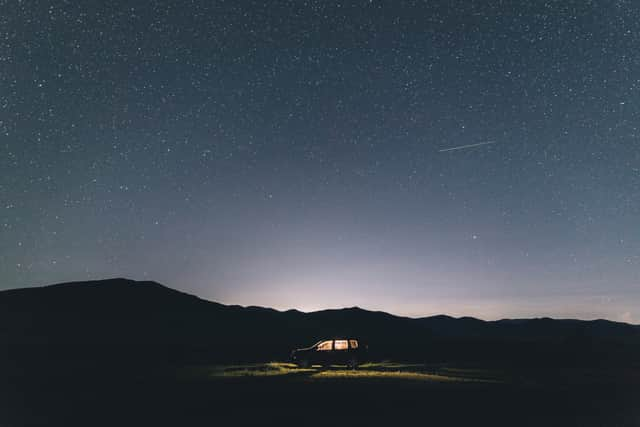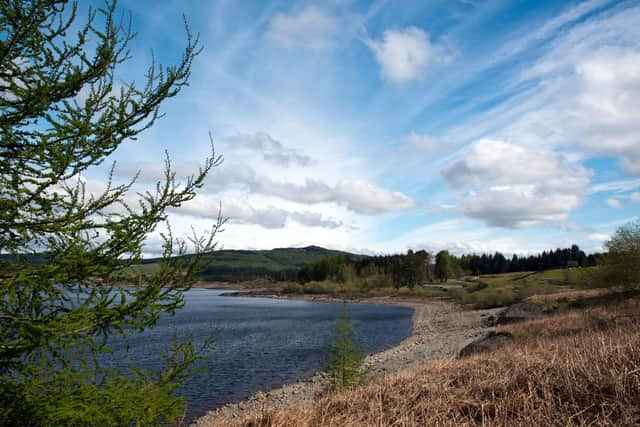Geminid meteor shower 2022: what is it, when is best time to see it in Glasgow - Met Office weather forecast
and live on Freeview channel 276
Multi-coloured shooting stars could light up the Glasgow sky this week with the Geminid meteor shower scheduled to make an appearance. Of course, they are not your typical stars and on this unique occasion, the magic light trailing through the sky is debris from asteroid 3,200 Phaethon.
The Geminid meteor shower is one of the most active showers of the year and one of the only major showers not to originate from a comet. At its peak, the shower has a rate of around 150 meteors per hour but pollution can play a key role in making the spectacular show less visible.
Advertisement
Hide AdAdvertisement
Hide AdIt’s also important to note, the moon will be rising while the shower is active, which is bound to affect visibility and drown out some of the fainter meteors. Taking this into account, it is imperative that you find a spot away from city lights, obstruction and pollution if you want to make the most of this year’s most active shower.
The Geminid shower is pretty reliable and is likely to be your last chance at seeing a shower this year. Here’s all you need to know about the Geminid meteor shower and how to view it in Glasgow.
What is a Meteor Shower?
According to the National Geographic, a meteor shower is a cluster of space rocks burning up as they plummet through Earth’s atmosphere. These small rocks are known as meteoroids and as they heat up, the gas surrounding them will glow brightly and give it its ‘shooting star’ like quality.
At the heart of a meteor shower is an icy comet. When the comet enters our solar system this heats up and forms into a gas. During this process, the comet will release dust, rocks, and stones.
Advertisement
Hide AdAdvertisement
Hide AdNational Geographic writes: “With each orbit, that process creates a stream of debris along the comet’s path that persists long after the dirty iceball has headed back out to the edges of the solar system.”
The Geminid shower is unique. Alongside Quadrantids, it is the only major meteor shower to not originate from a comet. Also, unlike other showers, Geminid’s meteors can be multi-coloured with some white, some yellow and a few green, red and blue.


These colours are partly caused by the presence of traces of metals like sodium and calcium.
When does the Geminid meteor shower peak?
According to the Royal Museums Greenwich, the “[Geminid meteor shower] is the one major shower that shows good activity before midnight”. This year, the Geminid is set to peak around December 13-14.
Advertisement
Hide AdAdvertisement
Hide AdAlthough, you may still have the chance to see it a couple of days before the peak and possibly the day after too, before it disappears altogether until next year.
How to see the Geminid meteor shower in Glasgow
You can view meteor showers with the naked eye so find a quiet spot away from light pollution and the hustle and bustle of the city, bring a chair and preferably a thick coat as temperatures are still below freezing in Glasgow.
What is the Met Office forecast for the Geminid meteor shower in Glasgow?


Given the recent wintry conditions, the Met Office forecasts that sky visibility before midnight on December 13 is medium - which may mean it is harder to view the shower. But aside from that, the Met Office is forecasting a clear night in Glasgow with no build-up of clouds and a low chance of rain.
Best spots near Glasgow to view the Geminid meteor shower
With Glasgow being Scotland’s second city it’s likely you’ll have to travel to escape light pollution and street lights. Here’s a few suggestions.
Advertisement
Hide AdAdvertisement
Hide AdGalloway Forest Park: Granted this is a bit of a trek being a 1 hour and 23 minute drive from Glasgow but it’s also up there among the best spots to stargaze in Scotland. The wide-open space is filled with forested glens, lochs and humongous hills and is also home to the Scottish Dark Sky Observatory.
Campsie Glen Car Park: Car parks are perfect stargazing spots for two reasons. Firstly they are practically ideal - just park up and sit back.
Secondly, they are often un-obstructed by towering buildings or overhanging trees, and if you find the right one away from the city lights, visibility can be perfect. Situated near Campsie Fells, this car park is just 35 minutes away from Glasgow.
Comment Guidelines
National World encourages reader discussion on our stories. User feedback, insights and back-and-forth exchanges add a rich layer of context to reporting. Please review our Community Guidelines before commenting.
